The 6 Different Parts of a Piano
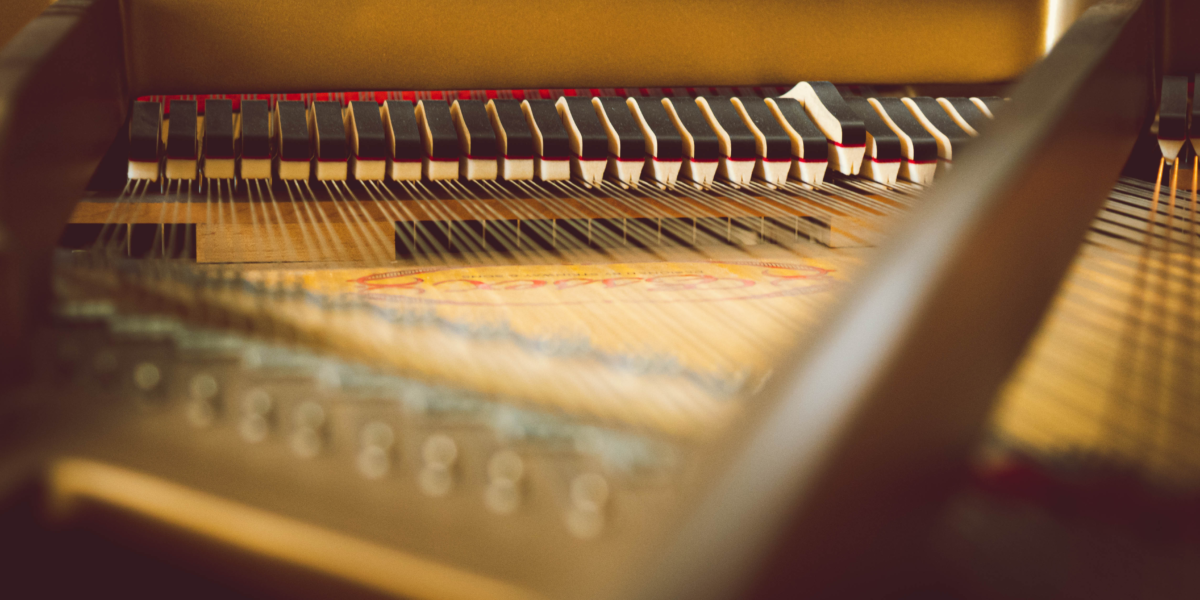
In this blog, we go over the parts that make up a piano and the role each piano component plays in the instrument’s design.
Building a piano is an elaborate process that involves over 1000 working pieces. Instrument-makers and inventors didn’t come up with the perfect design overnight. They’ve been fine-tuning and tweaking this instrument for centuries. Today, the piano comes in many shapes, sizes, and qualities.
Knowing the various parts and what they do can be helpful–or at least interesting– especially if you own a piano. If your instrument ever needs fixing, knowing the names and functions of the parts that make up your instrument makes it easier to identify problems and find replacements.
So what exactly are the bits-n-pieces that make up this marvelous instrument? Let’s have a look!

1. Casing and Lid
Acoustic pianos (whether cabinets or grand pianos) have an elegant allure. The casing and lid serve a purpose than looks good. Together they make up the frame that houses the sound-generating mechanism of the piano.
Casings are constructed by gluing several sheets of fine wood, which are then cut into a particular shape. The surface of the wood is sanded down until it’s smooth and coated with polyurethane, giving it a glossy finish.
The lids’ design facilitates tuning the piano and amplifies its sounds.
Legs & wheels
Legs elevate the piano to a suitable height, enabling musicians to play the instrument comfortably. The legs are solid wood (usually birch or maple) to hold the piano’s body, sometimes weighing over 1000 pounds.
Instrument-makers include wheels at the base depending on the piano to easily move it short distances.
2. Keyboard
The keyboard is the point of interaction between the musician and the instrument. A musician triggers a mechanism that produces unique and rich sounds by pressing on a given key.
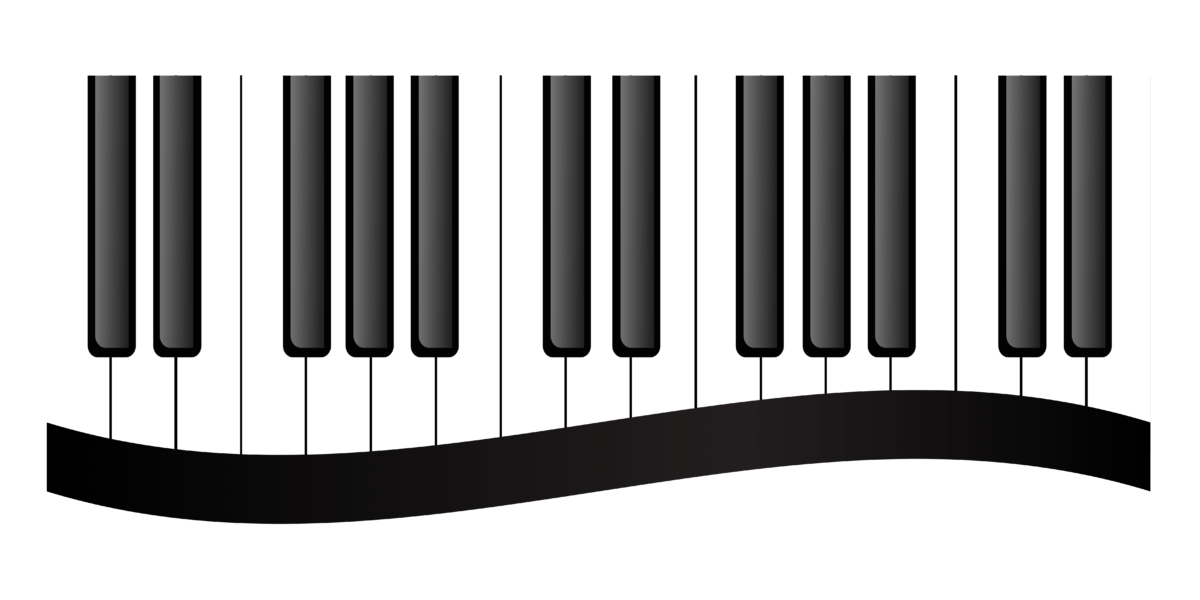
A piano typically has 88 weighted keys divided into 52 white and 36 black. The keyboard has seven octaves–twelve keys, seven natural notes, and five sharp or flat notes.
Modern keyboards have plastic keys. However, older pianos were made with ebony and ivory keys.
3. Strings
The source of the piano’s sound lies in a series of steel strings tightly wound from one end of the instrument to the other within the casing.
There are approximately 230 strings on a given piano. Two-thirds of the string make up the tenor and treble section and are made with plain drawn steel, while the last third, which makes up the bass section, is wound with copper.
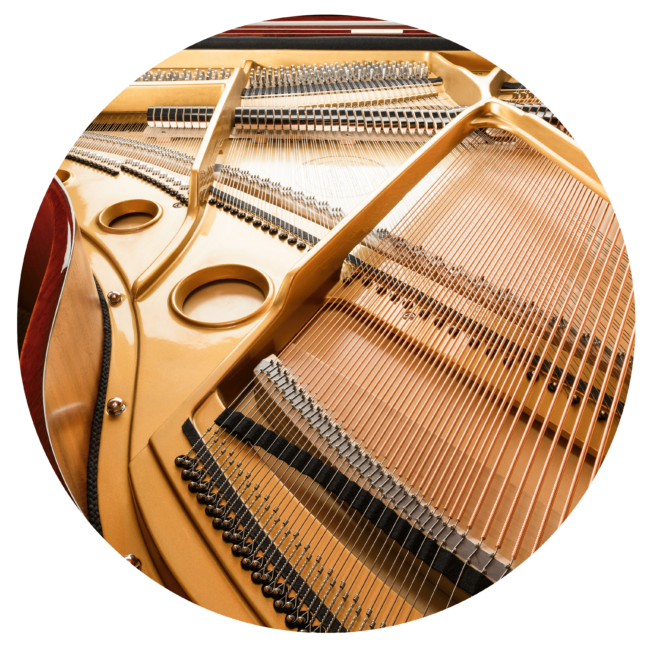
Tuning & hitch pins
Tuning pins (also known as wrest pins) are steel cylinders embedded into the casing and used to tune piano strings. By twisting the pin, you tighten or loosen your piano strings.
Read our blog Piano Tuning Essentials & DIY to learn more about tuning your piano.
On the other end of the piano are hitch pins which serve as an anchor for the strings.
Bridges
Nearest to the hitch pins is a set of bridges. Bridges are crucial in maintaining the right amount of tension on a given string. They connect the source of the sounds (strings) with the amplifier of the sounds (soundboard).
A piano bridge is made of wood and runs perpendicular to the strings. Typically, there is a short bridge for the bass section and a long bridge for the tenor and treble sections.
4. The Hammers
The felt-covered hammers are at the heart of sound creation and are part of what makes the piano a percussion instrument. They’re an essential part of the mechanism that connects the piano’s keys and strings.

The hammer is a sophisticated device that has several parts:
- Knuckle
- Shank
- Flange and flange rail
- Drop screw
- Escapement
- Hammer head
Action
The action (including the hammer) is a system of parts that connects the keys to the string. Hammer-action refers to an action where a felt-covered hammer strikes the piano strings.
While the mechanism is complex, the connected hammer strikes a string when you press a key.
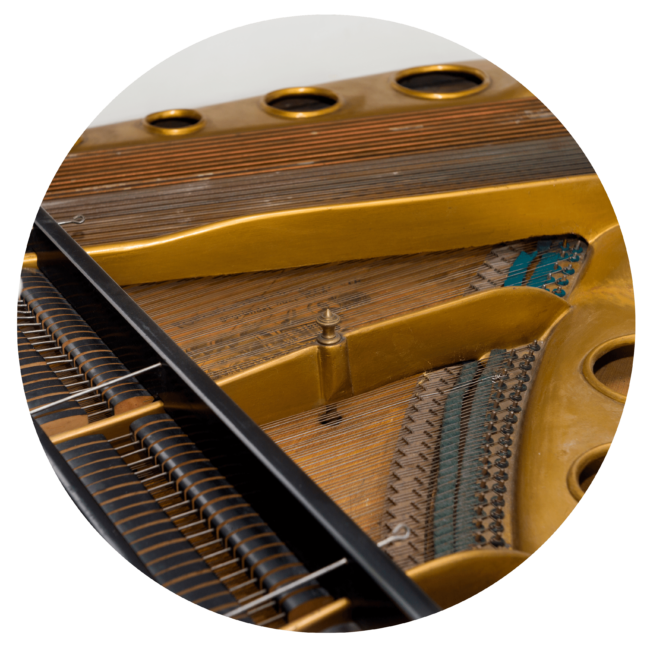
5. The Soundboard
Like a violin, cello, or acoustic guitar, part of the sound amplification lies in the piano soundboard.
The soundboard is a large, thin wooden plate in which the sound produced by the strings can echo or radiate over a wide frequency range. Like the case and lid, we make the soundboard by gluing several pieces of Sitka spruce together.
But how exactly do soundboards work?
After a hammer strikes a string, it vibrates and displaces the air, creating sound waves. Because strings are small, the amount of air they displace is minimal, so the sound they produce isn’t exactly booming. But, when connected to the bridge’s soundboard, they displace more air, creating louder sounds.
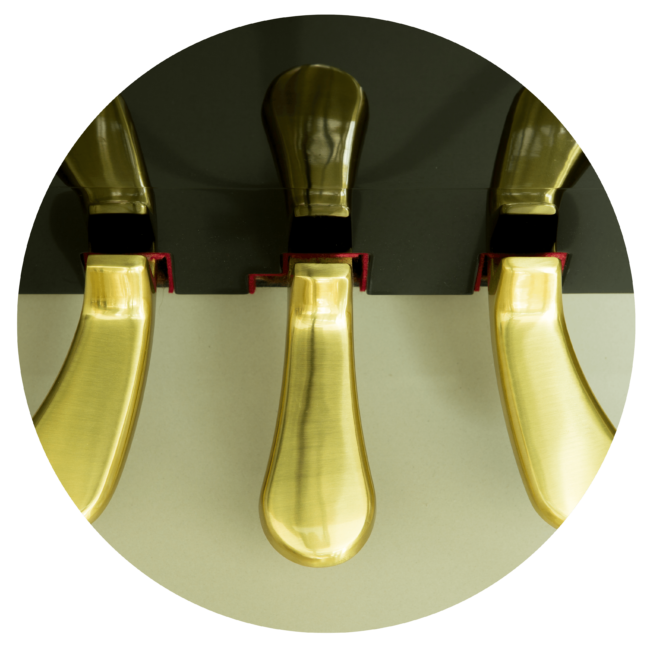
6. The Pedals
Modern pianos come with three soft, sostenuto, and sustain pedals.
The leftmost pedal is the soft pedal (una corda). It shifts the action when pressing down on it, so it only strikes a single chord, making the piano play softly.
The sostenuto pedal (the latest pedal addition to the piano) is in the middle. The sostenuto pedal sustains (holds for a long time) notes that you play.
And on the right is the sustain pedal. Like the sostenuto pedal, when you hold the sustain pedal, it causes the sounds to resonate for longer.
While pianos may look similar, instrument-makers use different materials depending on the model and type of piano. Therefore, there are many pianos with different designs and looks that offer different sounds, looks, and sensations.
Just as all pianos differ, so too do piano teaching apps. Simply Piano is an all-in-one platform that teaches you everything you need to know about playing the piano–from sheet music and posture to playing your favorite song.









